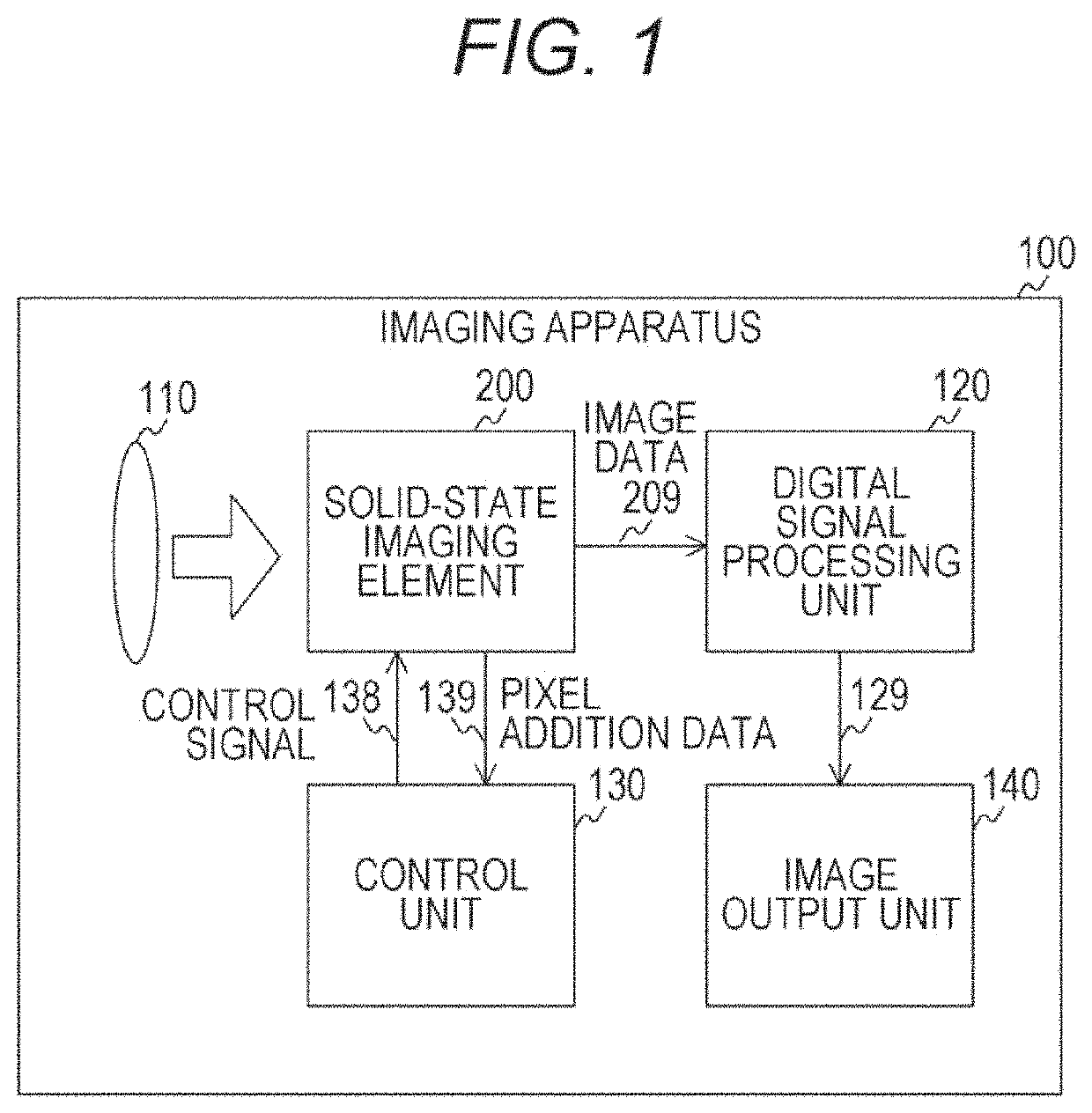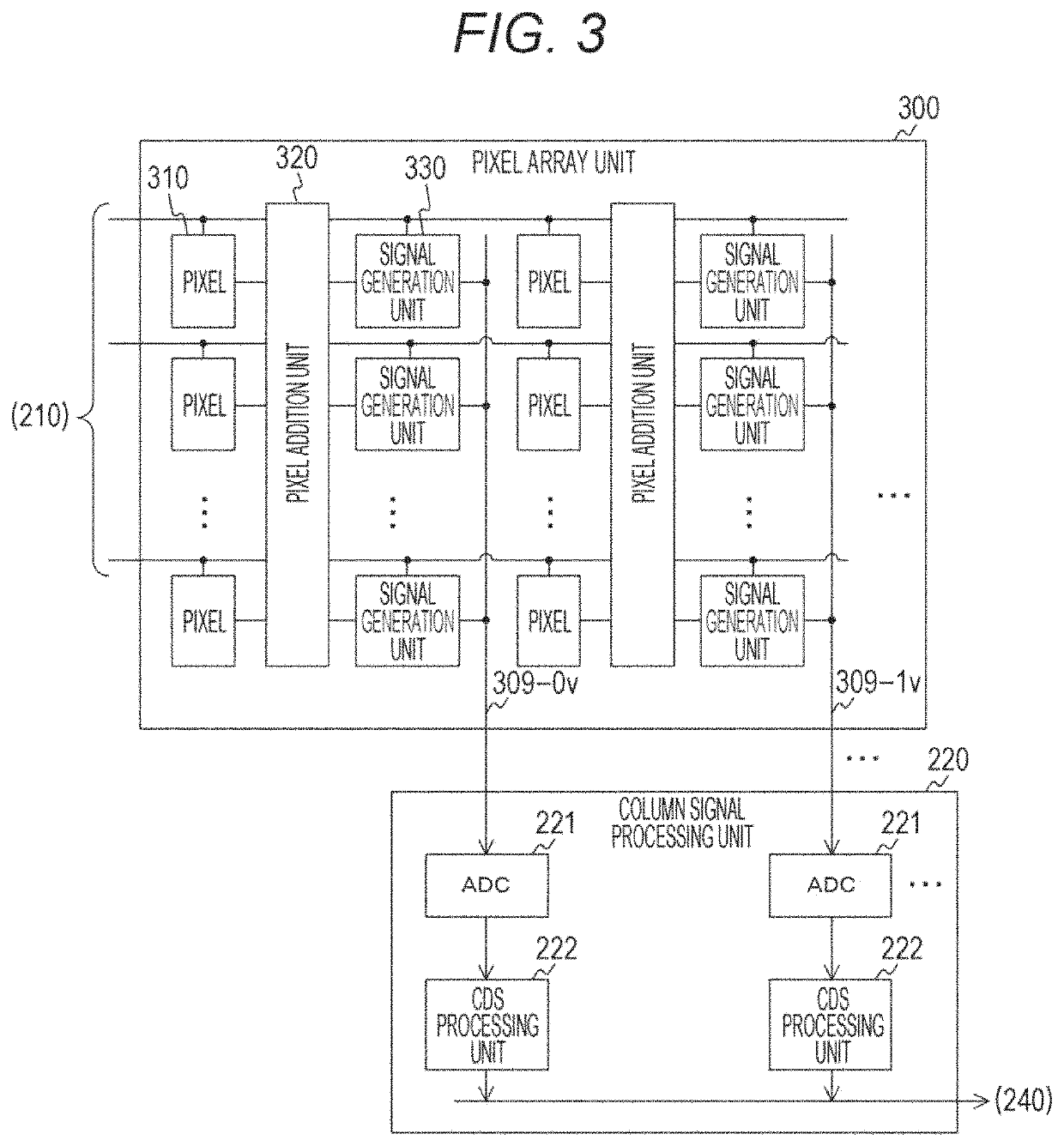Imaging apparatus and imaging apparatus control method to reduce power consumption without reduction of number of pixel signals
- Summary
- Abstract
- Description
- Claims
- Application Information
AI Technical Summary
Benefits of technology
Problems solved by technology
Method used
Image
Examples
first embodiment
1. First Embodiment
[0040][Configuration Example of Imaging Apparatus]
[0041]FIG. 1 is a block diagram illustrating a configuration example of an imaging apparatus 100 according to an embodiment of the present technology. The imaging apparatus 100 is an apparatus having an imaging function, and includes an imaging lens 110, a solid-state imaging element 200, a digital signal processing unit 120, a control unit 130, and an image output unit 140. Assumable examples of the imaging apparatus 100 include a digital camera, a smartphone, a personal computer, and the like. Examples of digital camera include a monitoring camera, an Intelligent Transport Systems (ITS) camera, a home camera, an action camera, an Internet of Things (IoT) camera, and the like.
[0042]The imaging lens collects light from a subject and guides the light to the solid-state imaging element 200.
[0043]The solid-state imaging element 200 captures image data in accordance with a control signal from the control unit 130. Here...
second embodiment
2. Second Embodiment
[0108]In the first embodiment described above, the imaging apparatus 100 determines the presence or absence of motion of the subject and switches the operation mode to the non-addition mode when motion is present. However, in a case where the imaging apparatus 100 is used for imaging an object (such as an automobile) moving at a constant speed or more in the non-addition mode, the mode might be switched to the non-addition mode even when a subject (such as plants) other than the object moves, leading to a possible concern that the power consumption cannot be sufficiently reduced. Therefore, in a second embodiment, the object speed is further measured in the pixel addition mode. That is, the imaging apparatus 100 according to the second embodiment is different from the first embodiment in that the speed of the object is measured in the pixel addition mode.
[0109]FIG. 12 is a graph illustrating an example of trajectories of past addition data and current addition da...
third embodiment
3. Third Embodiment
[0128]In the second embodiment described above, the imaging apparatus 100 measures the movement speed in the row direction. However, depending on the installation position of the imaging apparatus 100, the subject might move in the depth direction, leading to a possible concern that accurate measurement of the movement speed cannot be made in some cases. Therefore, the imaging apparatus 100 according to a third embodiment measures the movement speed in the depth direction. That is, the imaging apparatus 100 according to the third embodiment is different from the second embodiment in that the movement speed in the depth direction is measured.
[0129]FIG. 17 is a view illustrating an example of a past frame 550 according to the third embodiment of the present technology. The third embodiment assumes that the imaging apparatus 100 is installed at an upper side of the road and that the road extends in an optical axis direction (in other words, the depth direction). The ...
PUM
 Login to View More
Login to View More Abstract
Description
Claims
Application Information
 Login to View More
Login to View More - R&D
- Intellectual Property
- Life Sciences
- Materials
- Tech Scout
- Unparalleled Data Quality
- Higher Quality Content
- 60% Fewer Hallucinations
Browse by: Latest US Patents, China's latest patents, Technical Efficacy Thesaurus, Application Domain, Technology Topic, Popular Technical Reports.
© 2025 PatSnap. All rights reserved.Legal|Privacy policy|Modern Slavery Act Transparency Statement|Sitemap|About US| Contact US: help@patsnap.com



